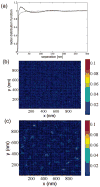The Role of Glycocalyx in Nanocarrier-Cell Adhesion Investigated Using a Thermodynamic Model and Monte Carlo Simulations
- PMID: 19081797
- PMCID: PMC2600419
- DOI: 10.1021/jp074514x
The Role of Glycocalyx in Nanocarrier-Cell Adhesion Investigated Using a Thermodynamic Model and Monte Carlo Simulations
Abstract
We present an equilibrium model for quantifying the effect of glycocalyx in mediating the interaction of functionalized nanocarriers with endothelial cells. In this model, nanocarrier adhesion is governed by the interplay between three physical parameters, namely, glycocalyx resistance, flexural rigidity of receptors, and receptor-ligand bond stiffness. We describe a procedure to rationally determine the values of these crucial parameters based on several independent (single molecule and cell-based) characterizing experiments. Using our model and independent derivation of the parameter values in conjunction with Monte Carlo simulations, we describe the binding of nanocarriers to endothelial cells at equilibrium. We show that we can quantitatively reproduce the experimental binding affinities with zero fitting to binding data. Additionally, our simulations provide quantitative descriptions for the multivalency in nanocarrier binding, as well as for the degree of clustering of antigens. Our study identifies two interesting parameters: glycocalyx resistance and antigen flexural rigidity, both of which reduce binding of nanocarriers and alter the sensitivity of the nanocarrier binding constant to changes in temperature. Collectively, our model, parameter estimations, simulations, and sensitivity analyses help provide unified molecular and energetic analyses of the nanocarrier binding process.
Figures








References
-
- Khademhosseini A, Langer R. Nanobiotechnology drug deliery and tissue engineering drug delivery and tissue engineering. Chem Eng Prog. 2006;102:38.
-
- Muro S, Muzykantov VR. Targeting of antioxidant and anti-thrombotic drugs to endothelial cell adhesion molecules. Curr Pharm Des. 2005;11(18):2383–2401. - PubMed
-
- Bell GI. Models for specific adhesion of cells to cells. Science. 1978;200(4342):618–627. - PubMed
Grants and funding
LinkOut - more resources
Full Text Sources
